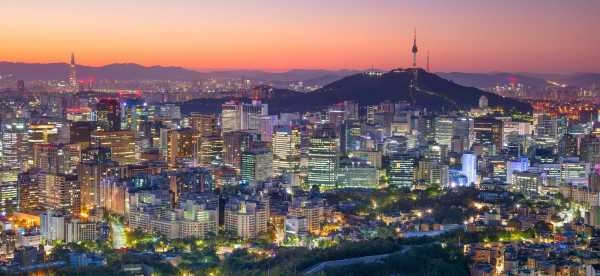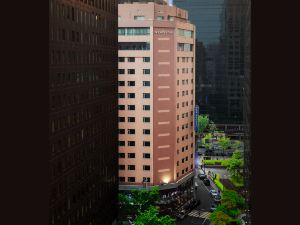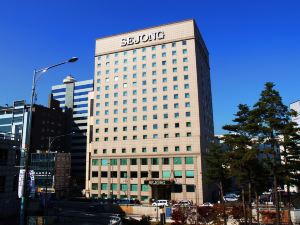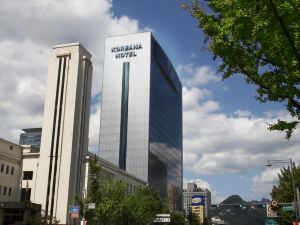Introduction of Seoul
Seoul, the vibrant capital city of South Korea, is a fascinating blend of ancient traditions and cutting-edge technology. As a first-time visitor, you'll be captivated by its stunning palaces, bustling markets, and modern skyscrapers. With a population of over 10 million people, Seoul is a bustling metropolis that offers a wide range of experiences, from exploring historic sites like Gyeongbokgung Palace and Bukchon Hanok Village to indulging in delicious Korean cuisine at local street food stalls or upscale restaurants.
Where to Stay in Seoul
You don't have to worry about accommodations when traveling to Seoul. Here, there are more than 1899 hotels for you to choose from:
- There are 30 five-star hotels in Seoul at an average price of 185 USD per night.
- There are 86 four-star hotels in Seoul at an average price of 81 USD per night.
- There are 310 three-star hotels in Seoul at an average price of 61 USD per night.
- There are 487 two-star hotels in Seoul at an average price of 44 USD per night.
There are many well-known chain hotels in Seoul. In Seoul, chain hotels such as Ramada are one of the top choices among travelers. Tmark Hotel Myeongdong Seoul is also one of the highest rated. If you're still unsure, Trip.com recommends Loisir Hotel Seoul Myeongdong.
Must-Experience Attractions for First-Time Visitors
- Namsan Mountain Park: Namsan Mountain Park is a popular urban park that offers a perfect blend of natural beauty, cultural attractions, and recreational activities.
- Gyeongbokgung Palace: This is the largest of the Five Grand Palaces built during the Joseon Dynasty. It's a must-visit for its historical significance and beautiful architecture
- N Seoul Tower: Also known as Namsan Tower, it offers panoramic views of Seoul and is a popular spot for couples who hang "love locks" on the fence as a symbol of their affection.
- Myeongdong: This bustling shopping district is a paradise for fashion and beauty enthusiasts. It's also a great place to try street food.
- Bukchon Hanok Village: Here, you can see traditional Korean houses (hanoks) that date back to the Joseon Dynasty.
Better to Know Before Visiting Seoul
- Language: The official language in Seoul is Korean. While some people speak English, especially in tourist areas, it's helpful to learn a few basic Korean phrases.
- Currency: The currency in Seoul is the South Korean Won (KRW). Credit cards are widely accepted, but it's always good to have some cash on hand for street food stalls.
- Weather: Seoul has four distinct seasons. Summers can be hot and humid, while winters can be extremely cold. Spring and autumn are generally mild and are considered the best times to visit.
- Food: Korean cuisine is diverse and delicious. Don't miss out on trying dishes like bibimbap, kimchi, and Korean BBQ. Street food is also a must-try.
- Etiquette: Koreans have a culture of respect for elders. It's also customary to use both hands when giving or receiving something to show respect.
- Safety: Seoul is generally a safe city, but like any major city, it's important to stay aware of your surroundings, especially at night.
Transportation in Seoul
Seoul has an extensive and efficient public transportation system, including subways, buses, and taxis. The T-Money card can be used on all forms of public transportation and can be recharged at any subway station or convenience store.
Incheon International Airport is the largest airport in South Korea and one of the busiest airports in the world. Gimpo International Airport is the second largest airport in South Korea. The two airports service the main gateway to the city.
What to Eat in Seoul
- Kimchi: This is a staple in Korean cuisine. It is a side dish made from salted and fermented vegetables, most commonly napa cabbage and Korean radishes, with a variety of seasonings.
- Bibimbap: A traditional Korean dish that translates to "mixed rice." It is served as a bowl of warm white rice topped with namul (sautéed and seasoned vegetables) and gochujang (chili pepper paste), soy sauce, or doenjang (a fermented soybean paste).
- Samgyeopsal: Grilled pork belly. It is usually served with lettuce, spinach, or other leafy vegetables to wrap the meat in, along with a spicy dipping sauce.
- Japchae: A sweet and savory dish of stir-fried glass noodles and vegetables.
- Tteokbokki: A popular Korean food made from soft rice cake, fish cake, and the sweet red chili sauce called gochujang.
- Korean BBQ: A popular method in Korean cuisine of grilling meat, typically beef, pork, or chicken. The meat is usually marinated before being grilled.
Best Time to Visit Seoul
The best time to visit Seoul is during the spring (April to June) and fall (September to November). During these times, the weather is the most favorable and the city is beautifully adorned with cherry blossoms in spring and colorful foliage in fall. The temperatures are comfortable for exploring the city and its attractions.
Average Temperature
• January to March: 3.21°C during the day, -0.95°C at night
• April to June: 19.97°C during the day, 15.03°C at night
• July to September: 26.03°C during the day, 22.14°C at night
• October to December: 9.63°C during the day, 5.28°C at night
Average seasonal Rainfall
• Spring: 30.33 cm
• Summer: 104.17 cm
• Autumn: 271.17 cm
• Winter: 42.4 cm



























Excellent
244 Reviews